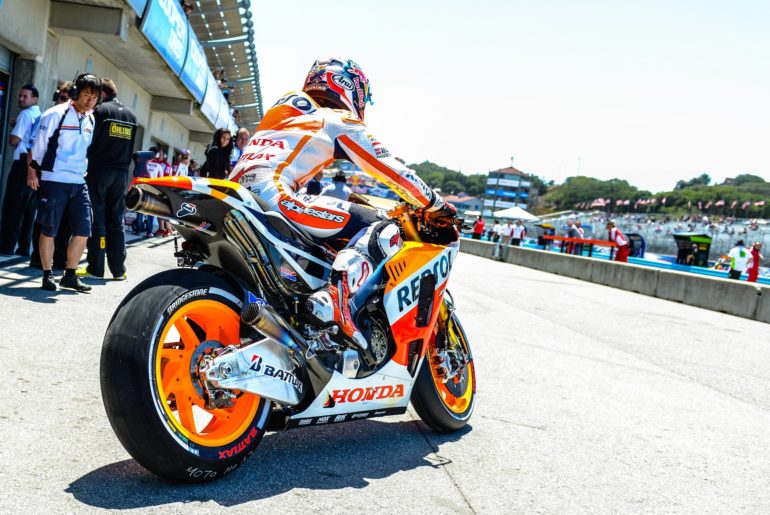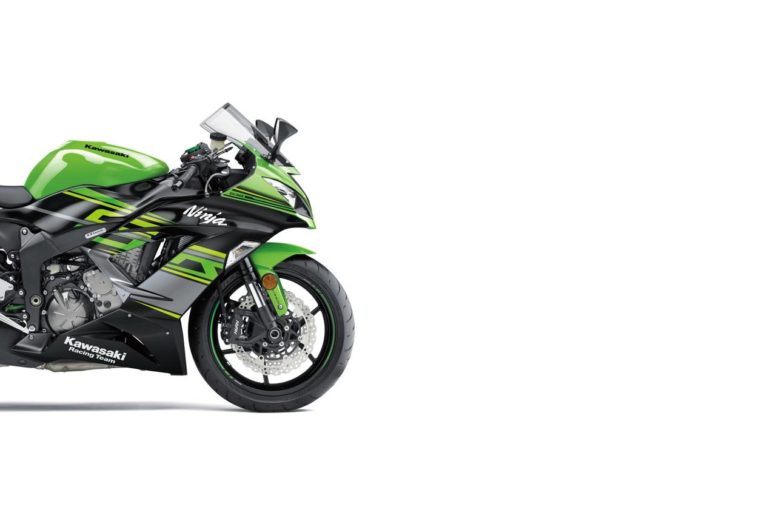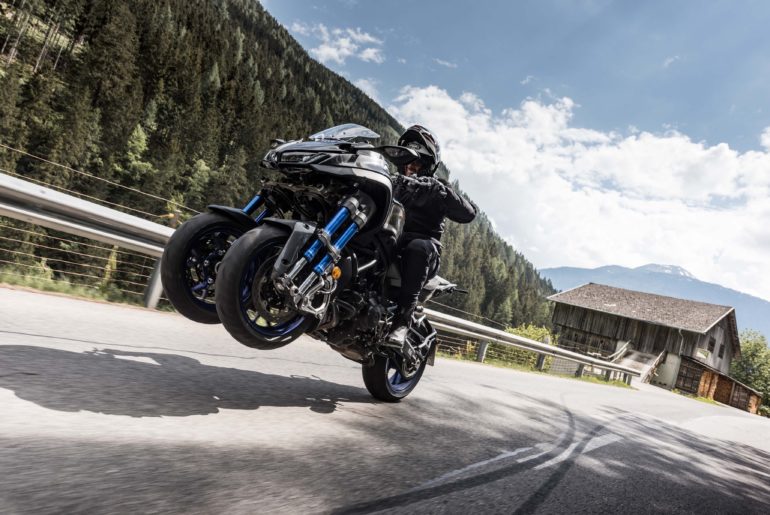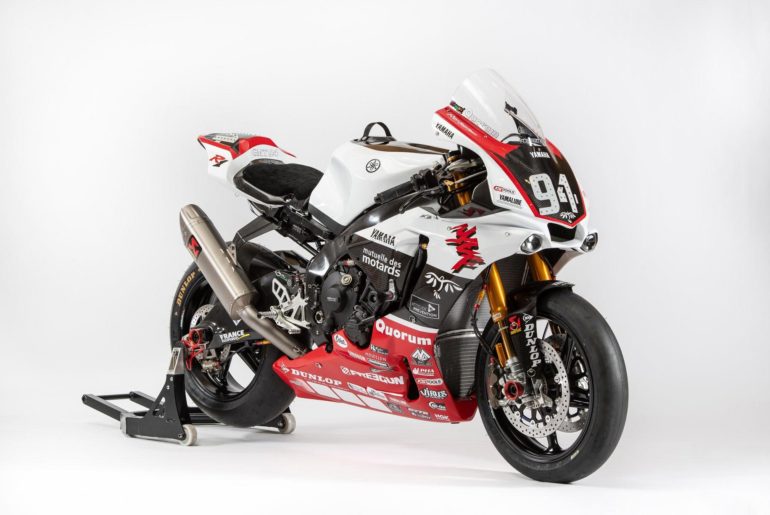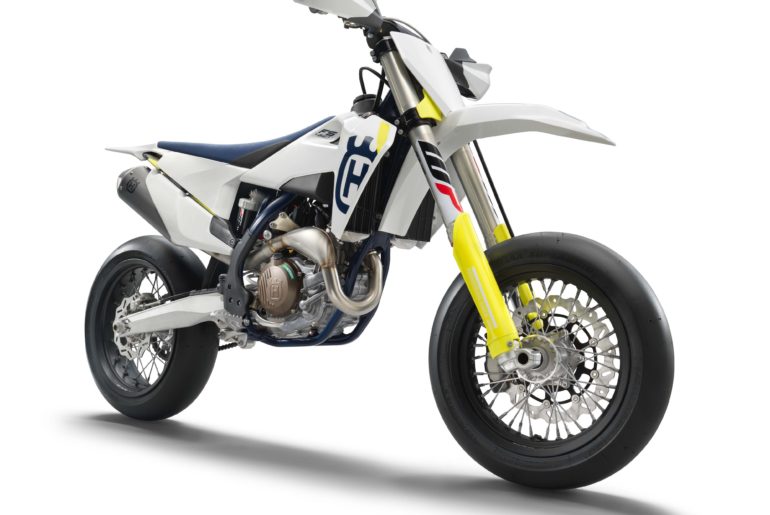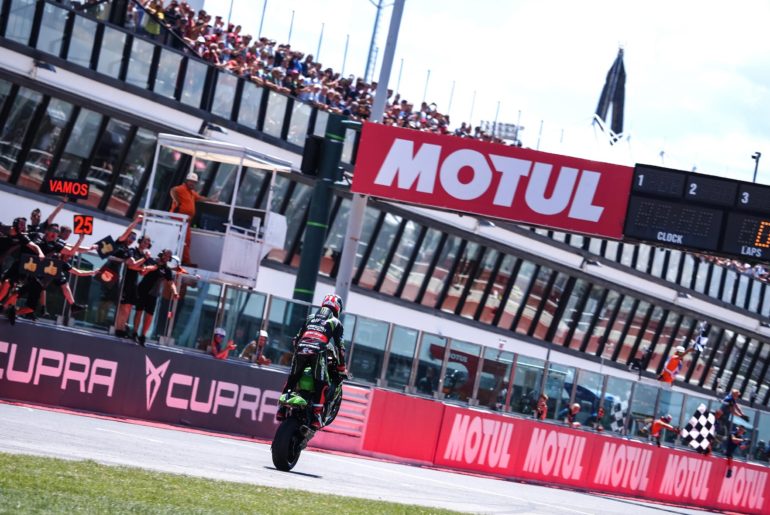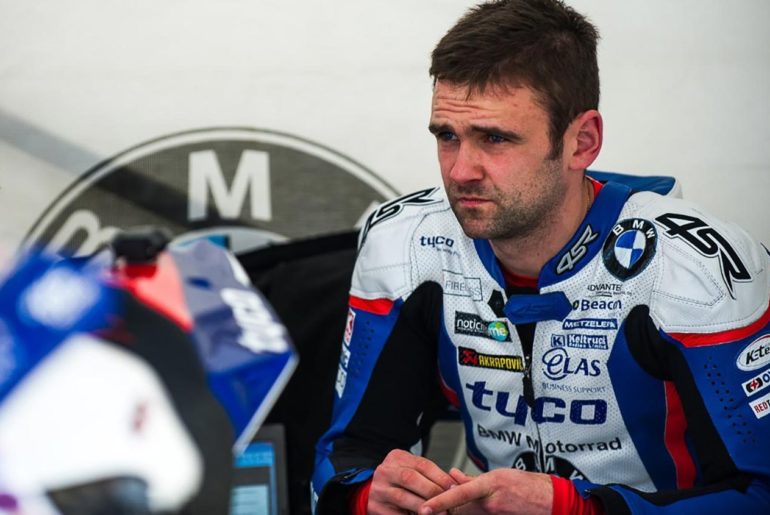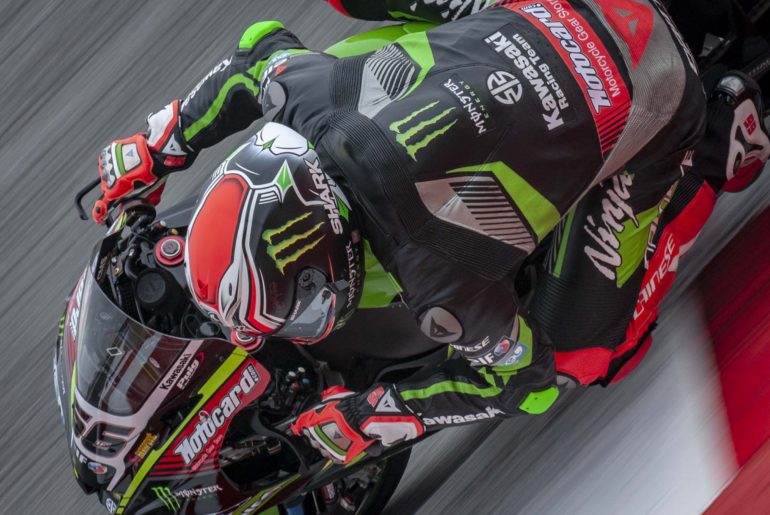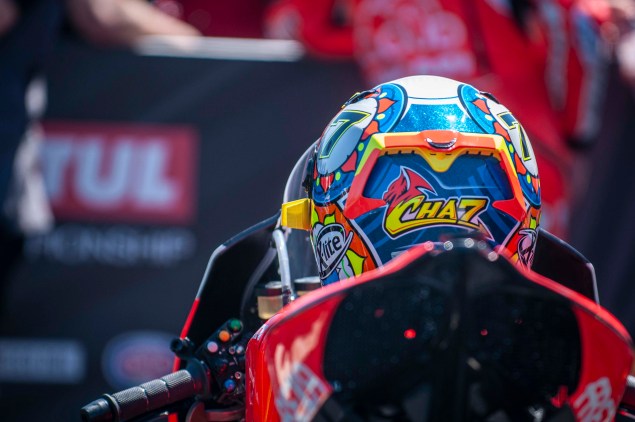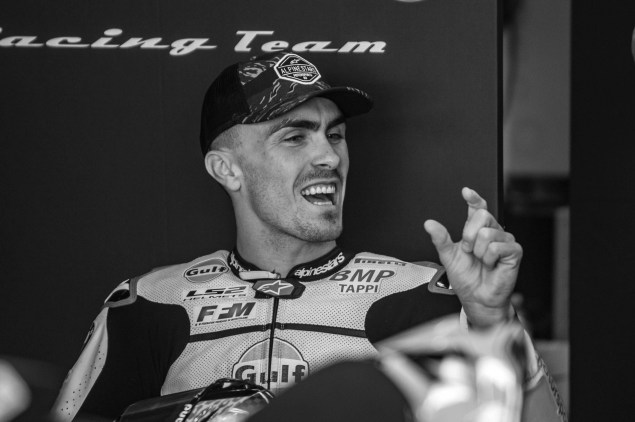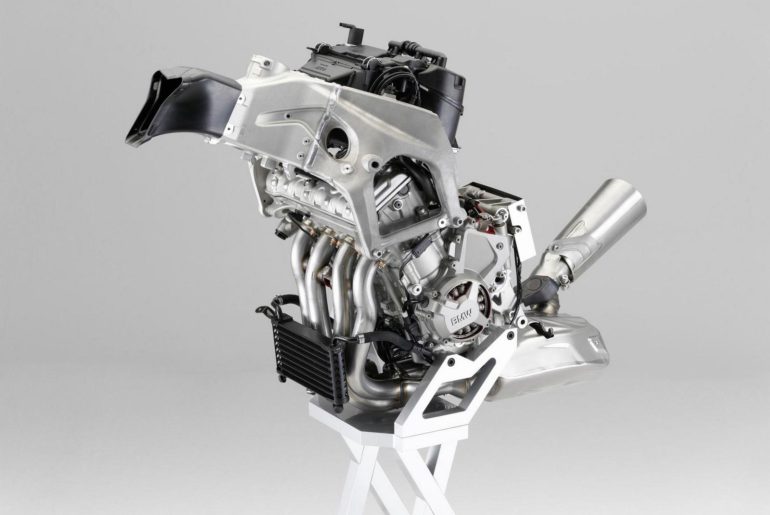Five riders from four manufacturers stood on the Misano podium to show the strength and depth of WorldSBK.
“This is the real Superbike racing” was how Marco Melandri assessed the Sunday’s racing at Misano, and it was hard to argue with the Italian.
Under blue skies and a burning sun, the action on track was just as hot with Jonathan Rea, Michael van der Mark, and Melandri all fighting it out for the win.
With Chaz Davies keeping a watching brief following his Saturday podium, and Eugene Laverty having stood on the Race 1 rostrum, it was clear this was the best race weekend of the 2018 season.
Five riders spraying Prosecco on the podium, and four manufacturers able to see their riders on the box, it was a fantastic weekend to bring a close to racing before the summer break.
While Rea might have completed a second consecutive double victory, he had to dig deep to get it.
Sunday was a difficult day for the reigning world champion, and in Parc Ferme and on the podium, his somber and reflective mood showed how much he had been affected by the death of friend, William Dunlop.
Rea wanted to go out and win the race for his fellow racer and his 64th WorldSBK success was one of his very best.
Coming through the field was tough for the Kawasaki rider, after starting ninth with the Race 2 grid reshuffle. Making clean and decisive moves through the field was difficult because of a setting change for Rea.
“This was a hard race,” admitted the victor. “I don’t know where to start, but we made a change to the bike today, but it definitely wasn’t for the better.”
“We changed the balance to try and help turn the corner a little bit better, but it was putting the front tire on the limit. I was really struggling when I was using a lot of angle, and as soon as I released the brake, I was having a lot of moving.”
“I had a few front slides there. I had to be clever today and pick up the points. I could see that Mikey was making the lap time in different areas to mine.”
The performance of Van der Mark was impressive. Having qualified down the order in Race 1, he was consistent throughout the race and able to come through to fourth at the flag.
This gave the Dutchman pole position for Race 2, and his pace was consistent once again. Ultimately it took until the penultimate lap for Rea to claim the lead, and the win was never secure until the chequered flag waved.
The problems that Rea suffered on Sunday also affected other riders. The introduction of a new larger profile front tire from Pirelli was well received, but some riders suffered from it.
The biggest issue was stability once the brakes were released, and the tire not allowing riders to enter the corner with confidence. If you could make the tire work it was a huge benefit, and if you couldn’t, you had to ride around the problem.
On Saturday front tire issues befall Melandri with the Italian saying “I was racing blind with the front tire. I knew it was the right tire to use in the conditions, you can see that because everyone used it, but I hadn’t been able to complete laps with it in practice.”
Getting experience of that larger profile tire will be crucial for teams for the remainder of the season. Numerous crew chiefs explained that it will now become the reference tire for teams in the same way that the larger profile rear tire has become almost compulsory for teams looking to win in WorldSBK.
The extra rubber on the rear has helped riders to control thermal wear on the tire and at Misano, like other recent rounds, this was crucial.
It was used to great effect by Van der Mark to win at Donington Park in May, and since then to have a chance of winning you have needed to use it. For the Dutch rider the tire also allowed him to right the wrongs of last year when a tire failure problem cost him the chance of winning at Misano.
“This track is good for me and Yamaha,” said Van der Mark. “We are good in the longer, faster corners but we’re making progress in the slower, tighter corners too.”
“We need to make some more steps because we were getting stronger throughout the weekend. It’s possible to fight for second place in the championship, but third place is my focus because that was the goal for this season.”
“I had a little bit more pace left at the end of the end, but it was the same for Johnny; he was fast all weekend.”
“I’m happy with second and I had some areas where I was faster than Johnny, but I didn’t want to do anything crazy because Marco was coming really quick as well. I didn’t want to make a big mistake for both of us.”
It was easy to make mistakes this weekend. The track temperature soared and it was as difficult as any round this year to find the extra pace needed. A couple of tenths of a second was the difference between a great weekend and a good weekend.
It’s given teams plenty to think about over the summer break, but when WorldSBK returns to action in Portimao the goal will be to maintain the Misano momentum where we saw the best race weekend of the year.
Photo: WorldSBK
This World Superbike story is made possible by our A&R Pro members. If you like reading WorldSBK stories on Asphalt & Rubber, you should consider supporting this content by signing up for A&R Pro.

